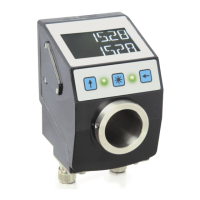Communication via CAN bus (CANopen)
AP10
Date: 28.02.2022 Art. No. 86853 Mod. status 37/22 Page 20 of 78
5.3 Process data exchange
5.3.1 Transfer of Process Data Objects (PDO)
Process data objects (PDO) serve for quick process data exchange. A maximum of 8 bytes of
user data can be transferred in a PDO. AP10 supports the Receive-PDO services RPDO1 and
RPDO2 according to Draft Standard 301 as well as the Transmit-PDO services TPDO1 and TPDO2
according to Draft Standard 301 and Device Profile 406.
5.3.1.1 Transmit PDO (from AP10 to the master)
PDO transfer from the display to the bus master (TPDO) can be initiated as a result of various
events:
• asynchronous, controlled by an internal device timer
• synchronous as a reply to a SYNC message
• as a reply to an RTR message
TPDO1 and TPDO2 are always formed from a status word (see chapter 5.3.3) and the current
position value.
The transfer behavior of TPDO1 is determined via objects 1800h, 1A00h and 6200h and is
assigned to asynchronous transfer. TPDO2 is defined via objects 1801h and 1A01h and serves
for synchronous transfer.
The messages have the structure shown in Table 13, and mapping cannot be changed.
Table 13: TPDO message
Asynchronous data transfer (TPDO1)
If a TPDO1 is to be sent cyclically, then the cycle time must be entered into object 1800h,
sub-index 5, in milliseconds. The TPDO1 will not be sent if the value 0 ms is written. The
function is disabled (delivery state). The minimum value to be set is 1 (= 1 ms). Alternately,
the value can also be written into the object 6200h which is permanently linked internally.
Synchronous data transfer (TPDO2)
The device is factory set to reply by output of the TPD02 message when receiving a SYNC
message. Thus it is set to the synchronous transfer type. 1 is entered in object 1801h, sub-
index 2. The device responds to every n SYNC message if a value n between 1 and 240 (=F0h)
has been entered.

